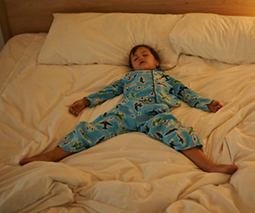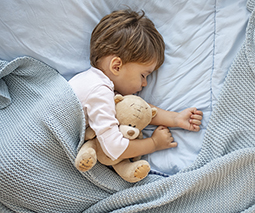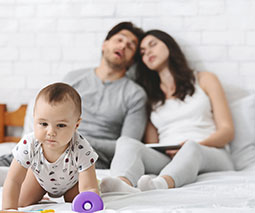Daylight saving 101: How to adjust your toddler’s routine to save your sanity

It’s daylight saving time, people! But don’t despair.
In fact, here are two very good reasons to feel happy:
- We actually gain sleep.
- When it comes to getting our little ones on board, the process should be simple.
Mothercraft nurse Chris Minogue told Kinderling Conversation that the key to daylight savings success is “keeping as close to your normal routine as possible”.
Well, hooray – that sounds easy, right?!
Chris says that how you manage the process comes down to the age of your child, and how many sleeps they have during the day.
Listen to Chris talk daylight savings on Kinderling Conversation:
Babies under six months
The key with this age group is keeping their daily routine as normal as possible – and you just need one day, not the whole week prior, to get them on track.
“It only takes one day for a baby to adjust to the change in time,” says Chris. “So, don’t get locked onto the daylight saving switch as THE reason for irregular behaviour.”
Here’s how it’s done:
- The evening before daylight savings begins, put your baby to sleep at their normal bedtime.
- The next day, adjust their day sleeps so they are ready for bed by 7pm; this usually means reducing their day sleeps from three down to two.
“The one hour forward will then be absorbed into their night’s sleep, so when they wake at 6am the next day, it will feel normal and they go back to their normal pattern,” says Chris.
Babies over six months
Older bubs can transition from two or three naps down to one or two sleeps in the day. These days, we just have to make sure we get to the same point of 7pm. You might have to shorten a sleep cycle to get them into the same pattern without becoming overtired.
Children two and up (who no longer have a day sleep)
“This is the hardest group to manage because we have to convince them to go to bed earlier,” says Chris.
The first step is to accept the one hour difference and put them to bed one hour LATER on Sunday night.
“Don’t panic,” says Chris. “They will absorb the one-hour difference they gained the previous night, so let them stay up with that extra bout of energy. And things will just flow on from there.”
Remember: Don’t blame daylight saving for ongoing problems
At the start of daylight savings, we’re moving our clocks forward one hour, which means it’s an easier transition to manage across almost all age groups. The end of daylight saving transition in March/April, when the clocks move backwards, means a lot more manoeuvring of naps and routine.
“If your child remains unsettled for days/weeks later, the behaviour is not related to daylight saving. It’s more often because of the two-week period beforehand, when there’s a lot more light in the mornings and your child has just gotten used to waking up,” says Chris.
Hmmmm.
Note to self: invest in blackout blinds, cross fingers and have a good weekend!









